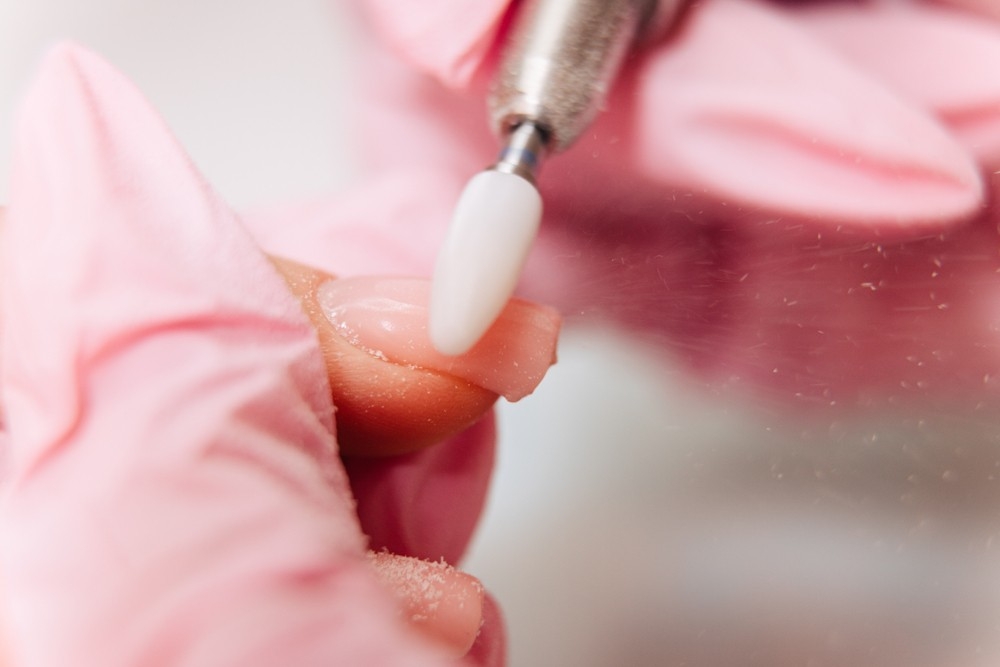Contents

Putting on acrylic nails is a great way to let your imagination run wild. As your interest in acrylic nail art grows, you’ll want to stock up on a variety of brushes.
Nail brushes of decent quality can cost a pretty penny. Because of this, taking good care of them is crucial if you want to avoid draining your bank account.
Clogged nail brushes are a typical problem that many individuals face. It can take a long time to clean and restore a nail brush that has become blocked. They may also be beyond repair, depending on how bad they are.
The easiest approach to extend the life of your brushes is to keep them free of buildup. However, anyone can run across this problem at any time.
If your acrylic nail brush gets clogged, don’t panic; you’ll soon find out how to clean it. As an added benefit, you’ll learn how to avoid brush stiffness and clogging. Proper nail care with Maby blog.
How to clean acrylic nail brushes
A blocked or stiff acrylic nail brush can be cleaned in a few different ways. How much acrylic is caked on the brush is a determining factor.
Methods for using monomer to clean acrylic nail brushes
The monomer is the most secure option for cleaning a stiff brush. Here’s what you should do:
Spread some monomer out in a pie pan.
Use this dish as a brush holder. The monomer should only reach the bristles.
Brushes need at least two hours of soaking time. The other option is to soak them overnight.
Warm water should be used to rinse the brushes. See if acrylic comes off in chunks.
The brush should be laid out to dry on a towel. See whether it still feels stiff after drying completely. If it is still stiff after following these steps, you can try them again.
Brushes can be so rigid that monomer is ineffective in certain situations. If the monomer fails to remove the acrylic, you can resort to acetone as a final resort.
Keep in mind that acetone is a strong liquid and might potentially ruin your brushes. It might cause the bristles to dry up and fray or even fall off.
Take good care of your nail brushes and you won’t need to use acetone at all!
However, if you find that your brushes have tenacious acrylic on them, try these solutions:
A shallow dish containing acetone.
For a few seconds, soak the brush brittle in acetone. To ensure that all of the bristles are moist, give the brush a few good spins.
Put the brush on a piece of paper towel. Scrape the bristles gently with a cuticle pusher. You should see chunks of acrylic coming off the brush.
You can remove the acrylic by repeating steps 2 and 3 more times.
Soak your brush in the monomer once you’ve used up all of the acrylic. Brush bristles can be revived by soaking them in water.
If you want to dry your brush quickly, lay it flat on a towel.
Keep your acrylic nail brushes unclogged!
Prevention is always preferable to treatment. You shouldn’t have to spend hours soaking brushes in monomer or acetone, which could damage the bristles. You can take numerous measures to prevent blockages.
After each use, wash your brushes right away
Cleaning Your Brushes After Each Use Is Crucial If You Want To Prevent Clogged Acrylic Nail
Cleaning your nail brushes after each use is essential but can be a pain in the neck. Restoring a nail brush can be a time-consuming process, so it’s best to spend the extra few seconds cleaning it after each use.
A lint-free cloth and some of the monomer from when you were applying the nails are all you need. Brush in monomer for a few seconds and swish around. If there are any clumps in the bristles, you can gently push them out using a cuticle pusher.
Remove any remaining residue from your brush before soaking it in a lint-free cloth. Lay them flat on a towel to dry in the air.
Don’t hang them up to dry with the bristles pointing in the air. Holding the brush in this way risks breaking the handle and ripping out the bristles.
Do not use the brush again until it has dried completely.
When doing ordinary cleaning, the monomer is generally sufficient. Nail brush cleaners may be more effective, so you can try those out if you like.
Modify the Proportion of Monomer to Powder
Nail brushes often get too stiff because the monomer-to-powder ratio is wrong.
Brushes can be ruined by the residue left behind by a wet or chunky acrylic bead. The edges of a high-quality acrylic bead shouldn’t be powdery dry.
The timing of applying the acrylic bead is also important. If you want a glossy finish, then you should wait until it dries. If the bead still feels gritty after a few seconds, keep waiting.
Make Sure Your Brushes Are Clean Before Applying the Acrylic
How to Keep Your Acrylic Nail Brushes from Clogging: Inspect Them During Use
Inspect the brushes regularly as you apply the acrylic to the nails. Remove any excess powder or pieces from the brush after applying an acrylic bead to a nail.
Use a paper towel or absorbent cloth to remove any remaining residue. If there are any powdery or dry spots, the monomer can help smooth them out.
As you work to form the acrylic, check your brushes at regular intervals. Keep your brushes clean by wiping them down between strokes and checking for clumps with a cuticle stick.
If you follow this procedure, you’ll spend less time washing your brushes after each usage.
Methods for Under-Nail Hygiene
In conclusion
If you’re serious about becoming an expert at applying acrylic nails, it’s wise to invest in higher-quality equipment as you go.
There is a noticeable difference between using a high-quality nail brush and a low-cost one, therefore it’s well worth the investment. These brushes, however, can be quite pricey.
Taking good care of your brushes will keep you from having to buy new ones so frequently.
It’s normal for your brush to get caked or stiff occasionally; this is nothing to be concerned about. You can now clean your acrylic nail brushes with monomer or acetone with confidence.
Odell, Ruth
New Orleans-based freelance writer Ruth Odell. She has her cosmetology license and is often trying out various styles. She’s a huge fan of nail art and enjoys doing it herself.
Ruth is a fellow color enthusiast who thinks that painted fingernails are the best way to express oneself. In addition, please refer to: Home Remedies for Eliminating Acrylic Nails.
